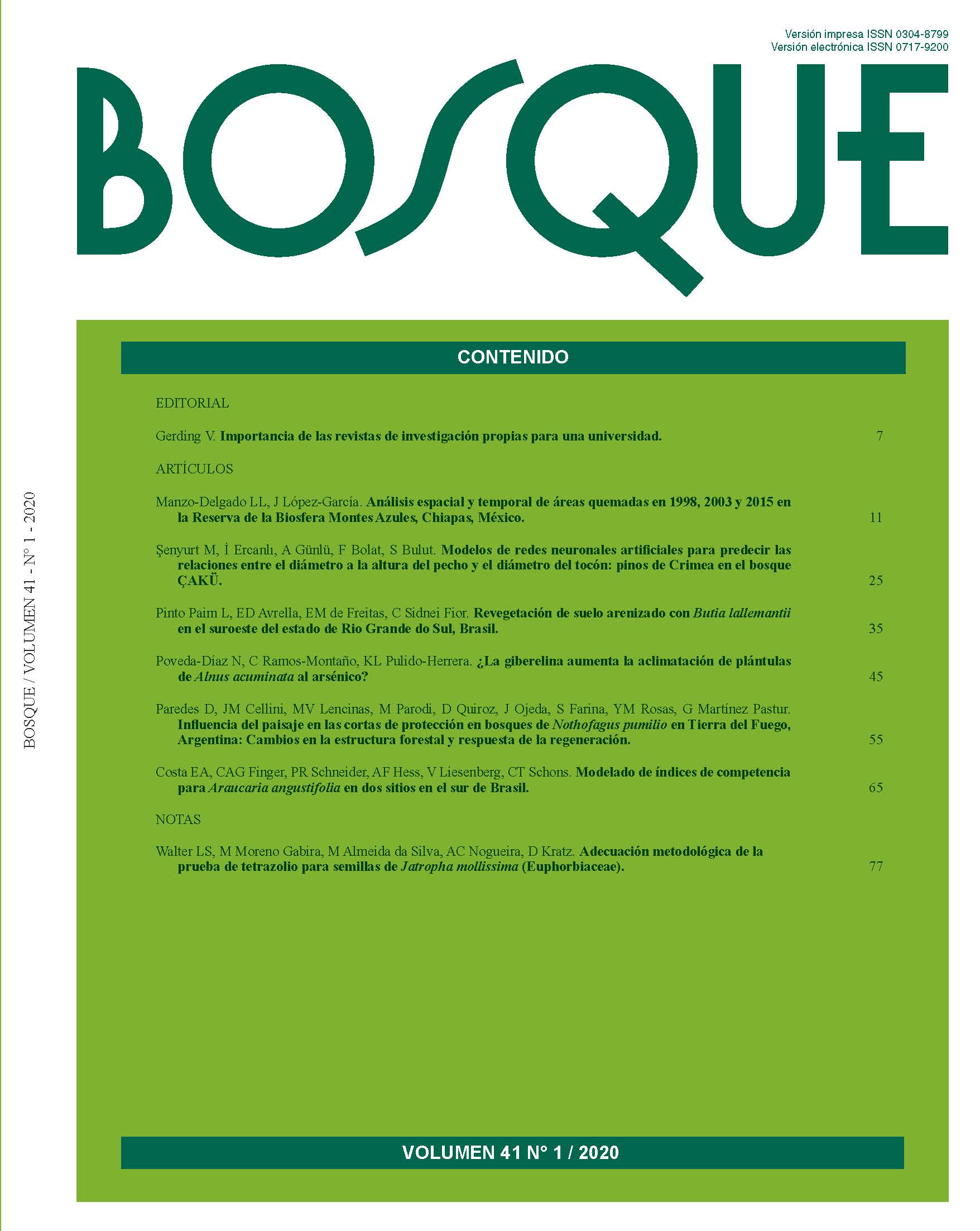Modeling competition indices for Araucaria angustifolia at two sites in southern Brazil
Main Article Content
Abstract
This study aimed at modeling competition indices for individual trees of Araucaria angustifolia in natural forests. A total of 397 objetive trees were sampled in Lages and São Francisco de Paula municipalities. Through a non-linear regression analysis, 22 distance-independent and distance-dependent competition indices were modeled based on the diameter at breast height (d) and relative height (hrel: ratio between the total height of the objetive tree and the maximum potential height estimated for the same diameter). The adjusted equations of the indices according to d of the objetive tree achieved values of R² ≤ 0.546 (Syx% ≥ 15.0). The independent variable hrel improved the estimates, explaining up to 63 % of the variation in the data (Syx% ≥ 14.6). In general, competition indices - which consider in the calculation only the variables d of the objetive tree, d of the competitors, its horizontal distance and eventually the height variable- showed superior performance. Therefore, they are indicated for use in growth modeling of A. angustifolia, due to superior facility of application in natural forests. The developed equations showed to be good representations of the degree of competition at the level of the individual tree of A. angustifolia for the two evaluated sites, measuring only the diameter or including the height of the central tree for more accurate precision. The expansion of research to other sites along the distribution of the species will confirm the application of these equations to their full extent. In addition, this work contributes to the inclusion of competition indices in modeling of individual trees in uneven-aged mixed forests.

